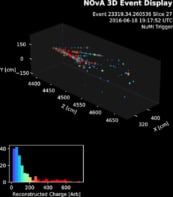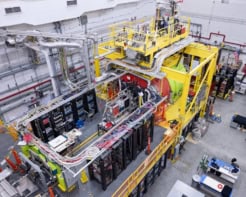[Corrected version of story published on 19 Nov 1999] An international team of physicists has found a new upper limit for the effective electron neutrino mass. According to physicists from the Max Planck Institute for Nuclear Physics in Heidelberg and the Kurchatov institute in Moscow, the neutrino must have a mass of not more than 0.2 eV - which is 2.5 million times smaller than the mass of the electron. The experiment, in the Gran Sasso underground laboratory in Italy, is presently the world's most sensitive double beta decay experiment.
The team studied the radioactive decay of germanium 76, which cannot occur by normal beta decay in which one electron and one antineutrino would be emitted. The nucleus can, however, undergo double beta decay, which is extremely rare. This “neutrinoless” mode is only possible if the neutrino has mass and is its own antiparticle.
The experiment uses 11.5 kg of enriched germanium-76 in form of five high-purity Ge-detectors. The signature of neutrinoless double beta decay would be a peak in an energy spectrum at the Q-value of the reaction. Finding such a peak would be the first evidence that the neutrinos emitted in nuclear decays have mass. Neutrinos come in three types – electron neutrinos, muon neutrinos and tau neutrinos – which all could contribute to the double beta decay.
Last year, so-called neutrino oscillation experiments at the SuperKamiokande detector in Japan reported the first clear evidence for non-zero neutrino masses. However, such experiments can only measure mass differences between different neutrino mass eigenstates, while double beta decay could help to fix the absolute mass scale.



